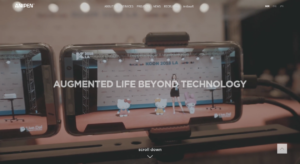
Throughout history we have seen plenty of examples of companies that have failed to adapt when there was a sea change in the prevailing business model. Consider the companies that fell by the wayside when the software industry switched from a per-license pricing model to SaaS.
Now in the rapidly evolving digital world, we’re on the verge of a similar sea change within IoT with companies increasingly looking at taking the plunge into IoT implementation, says Brian Casto, SVP of global professional services at Eseye.
In fact, by 2025, over 27.1 billion IoT devices are expected to be deployed globally. This accelerated growth also aligns with the findings from our State of IoT Adoption research, undertaken in April 2021, in which 500 decision makers in the UK and US revealed their commitment to ramping up IoT investment, with 49% planning new projects in the next two to three years and 89% planning budget increases.
However, many companies lack the resources and skills needed to architect, integrate and maintain a connected solution in their enterprise environment. And, without an experienced technical team, project costs can quickly escalate into unanticipated risks which may ultimately threaten the overall success of the project.
IoT projects fail to reach their full potential
As mentioned above, many organisations lack the specialist skills internally to develop and deploy IoT-based solutions. Often companies don’t have the in-house expertise or the resources to manage multiple vendor relationships for various components of an IoT solution.
Without a doubt there is a lot of complexity associated with IoT devices, such as connectivity issues, an IoT solution should provide reliable and secure connectivity that overcomes any international or local restrictions. It should be robust and well-designed and in today’s world of escalating threats security considerations need to be factored in from the outset.
There are also logistical challenges – particularly for global or multi-region roll-outs, and the ongoing management and co-ordination of multiple vendors, and many other challenges for companies to deal with.
Our research showed that respondents were struggling with security, connectivity, and device onboarding, all of which were cited as top challenges; 39% said security was their biggest hurdle, while for 35% device onboarding, testing and certification, and cellular connectivity across multiple countries and regions had also proved difficult. As a result, 77% of respondents said that IoT projects embarked upon in the last 12 months had failed to reach their full potential.
To tackle this vast unknown world of IoT, many organisations have turned to global system integrators to bring physical assets onto the Internet and build the network infrastructure required to manage devices and data. However, the diversity of use cases and nature of extreme use cases means that a one-size fits all approach cannot be adopted and rolled out.
Often enterprises realise they need a specialist provider rather than a generalist. Frequently, companies find that they need to develop a unique solution for projects and often they must build this from the ground up. For example, Cisco estimates that 75% of IoT projects fail, often at the proof-of-concept stage, and that is because most IoT devices are hand-built for the use case.
Why companies need ubiquitous connectivity
Additionally, many service providers, SIs and mobile operators talk about their ability to provide global coverage, but often this isn’t equivalent to ubiquitous connectivity. Roaming agreements might be in place to help devices connect to compatible networks when travelling across borders. Nevertheless, they don’t guarantee that the connectivity is accessible or consistently reliable everywhere, which again can cause challenges for the company.
Then there are compliance considerations across markets and different mobile network operators. Companies often turn to IoT to capture previously untapped data that can transform their operations and give them a competitive edge. But due to the business-critical nature of these data streams, any security breach means that the organisation could incur severe financial and reputational damages.
On top of this, compliance with rigorous data protection frameworks is often a critical business requirement. As such, many organisations will favour an on-premises or hybrid IoT deployment over a cloud-driven one to retain complete data and security control and mitigate risk. And if they are looking at cloud integration or cloud migration, they will be seeking an ultra-simplified but highly secure way to integrate their data into the cloud.
When it comes to mission-critical infrastructures and IoT devices, companies naturally strive for near-100% network uptime, even in times of crisis, and any IoT solution should provide reliable and secure connectivity that overcomes any availability issues throughout the device’s lifecycle in the field.
Helping enterprises meet the IoT challenge
Taking these challenges into consideration, what enterprise customers really need is an advisory service when embarking on an IoT initiative to ensure their initiative reaches the goals of the business. Here at Eseye, we have rethought how we can provide a managed-services approach to organisations, offering customers a blend of consulting services, hardware design and connectivity to help guide them on their IoT journey.
Today we work with thousands of customers from every industry vertical, working side-by-side every step of the way from initial concept through to providing IoT device design, cellular connectivity, hardware, technical consultancy, and round-the-clock support. Additionally, our team of solution architects and technical solution consultants ensures that any IoT initiative has the necessary rigour in place and is delivered to market on time and on budget, helping customers to realise their desired business outcomes from the project.
Right from the outset, our IoT advisory services help organisations future proof their project, by ensuring product and strategy will deliver long term success. We offer specialist device design and prototyping to accelerate project progress from concept to deployment. As our research shows, device onboarding is always problematic, and we provide robust testing techniques to ensure the device is fit for purpose.
We also provide specialist consultancy to ensure the devices meet any required certification, and our deployment services mean that the end-to-end experience, from pilot to commercial deployment, is a success. Without an experienced team IoT project costs can quickly escalate and our round-the-clock technical support team ensures maximum uptime for every global deployment.
Growth of IoT is set to accelerate
With the anticipated growth of IoT over the coming years, companies need to be confident that their IoT initiative is not going to fail, as so many have done in the past. Without a doubt the IoT ecosystem is complex, and enterprises are finding it much harder to achieve success with their IoT ventures than anticipated.
Our dedicated professional services team leads customers through a proven methodology to define their appropriate IoT strategy that supports the development of a solution that meet the goals of the business, enabling organisations to deliver enterprise-scale global IoT solutions that work, every time, everywhere.
The author is Brian Casto, SVP of global professional services at Eseye.
Comment on this article below or via Twitter: @IoTNow_OR @jcIoTnow
- 2021
- About
- across
- Adoption
- advisory
- agreements
- All
- April
- article
- Assets
- availability
- Biggest
- Billion
- breach
- build
- business
- business model
- cases
- Cause
- Certification
- challenges
- change
- Cloud
- coming
- commercial
- Companies
- company
- complex
- compliance
- Connectivity
- consideration
- consulting
- Costs
- could
- countries
- crisis
- critical
- Customers
- data
- data protection
- deal
- Design
- develop
- Development
- device
- Devices
- different
- digital
- digital world
- Diversity
- ecosystem
- Edge
- Enterprise
- enterprise customers
- Environment
- example
- experience
- financial
- fit
- full
- future
- Global
- Globally
- Goals
- going
- Growth
- guide
- Hardware
- help
- here
- history
- How
- HTTPS
- Hybrid
- industry
- Infrastructure
- Initiative
- integration
- International
- Internet
- investment
- iot
- IoT Device
- iot devices
- issues
- IT
- journey
- Key
- local
- Long
- looking
- management
- Market
- Markets
- Mobile
- model
- needed
- network
- networks
- offer
- offering
- Onboarding
- Operations
- Organisations
- Other
- physical
- pilot
- planning
- Plenty
- pricing
- Product
- project
- projects
- proof
- protection
- prototyping
- provide
- provider
- Relationships
- research
- Resources
- Revealed
- Risk
- SaaS
- SEA
- security
- seeking
- Services
- set
- similar
- skills
- So
- Software
- Solutions
- Stage
- Strategy
- streams
- success
- support
- Supports
- system
- Talk
- Technical
- technical support
- techniques
- Testing
- threats
- Through
- time
- top
- Transform
- Uk
- us
- vendors
- Ventures
- verge
- What
- within
- without
- Work
- working
- world
- years




